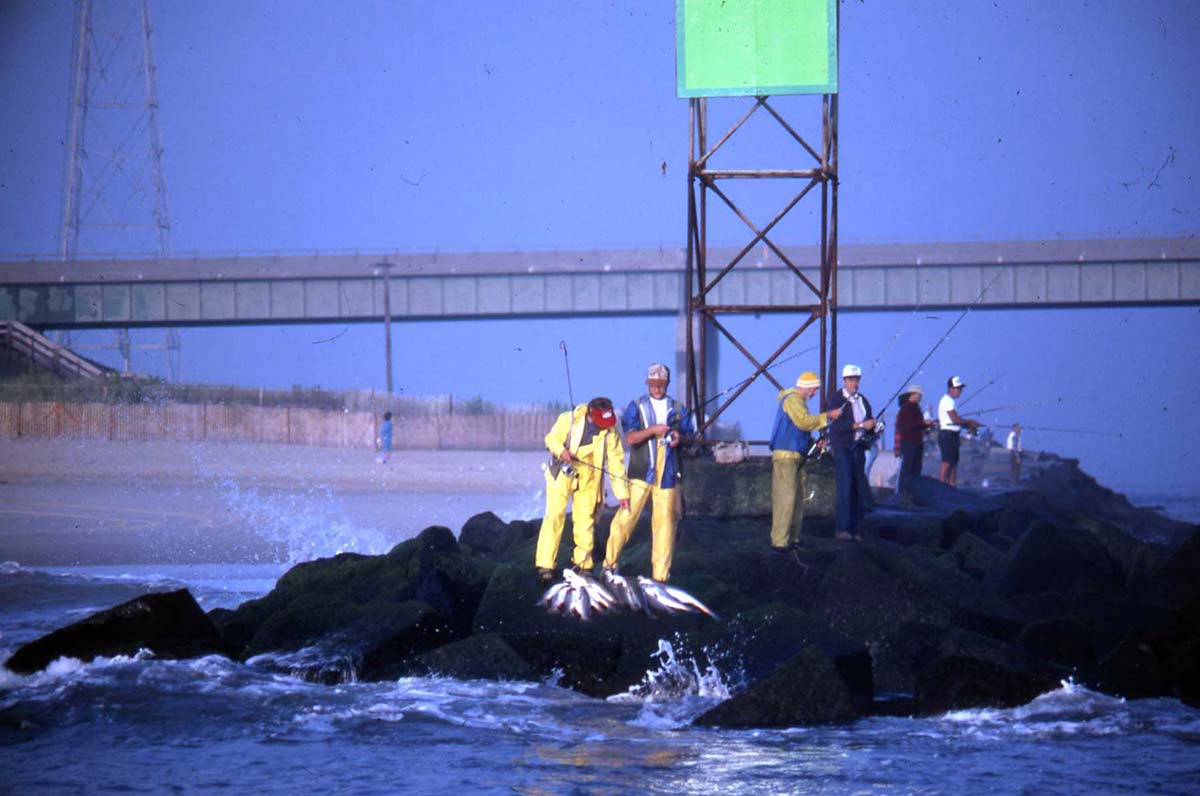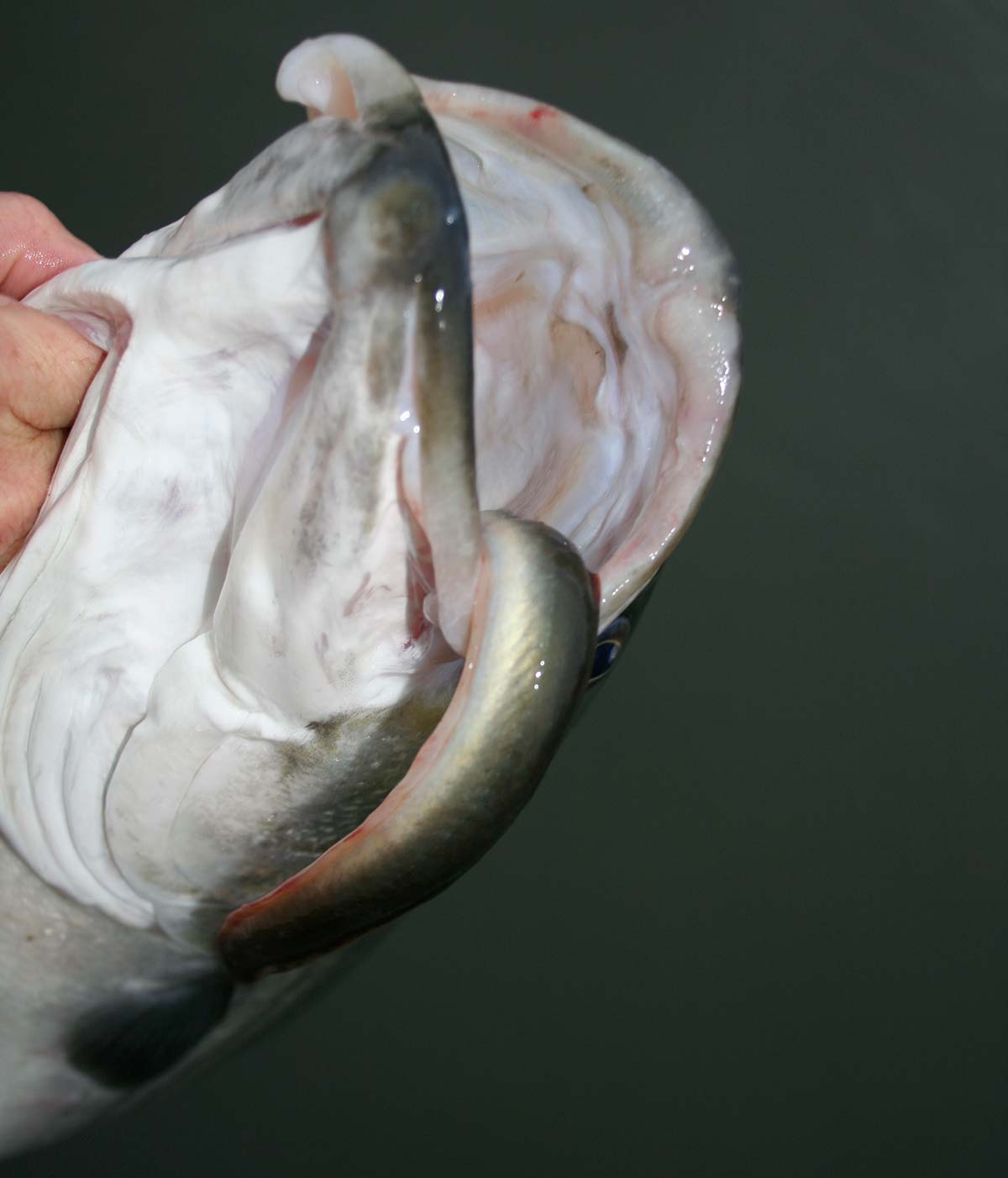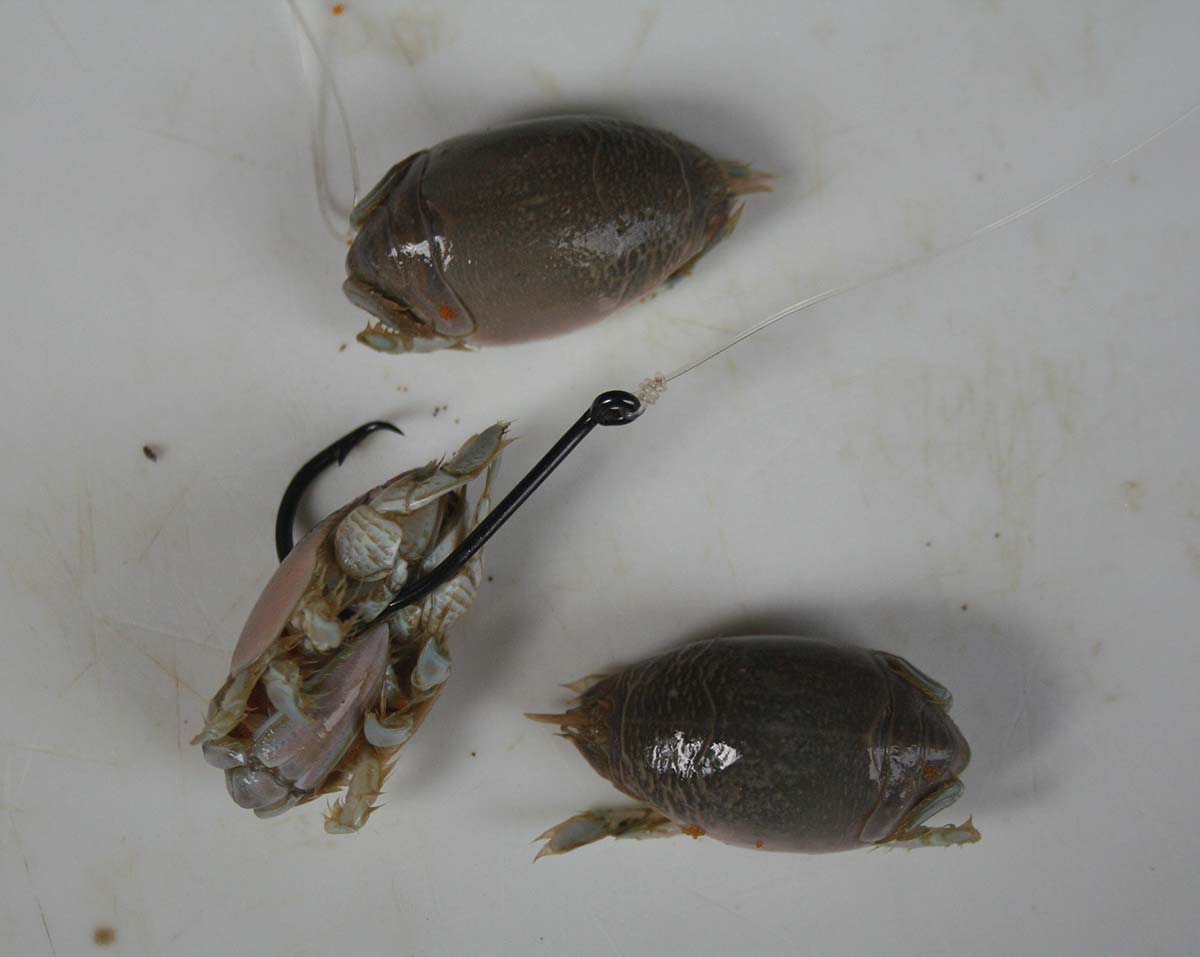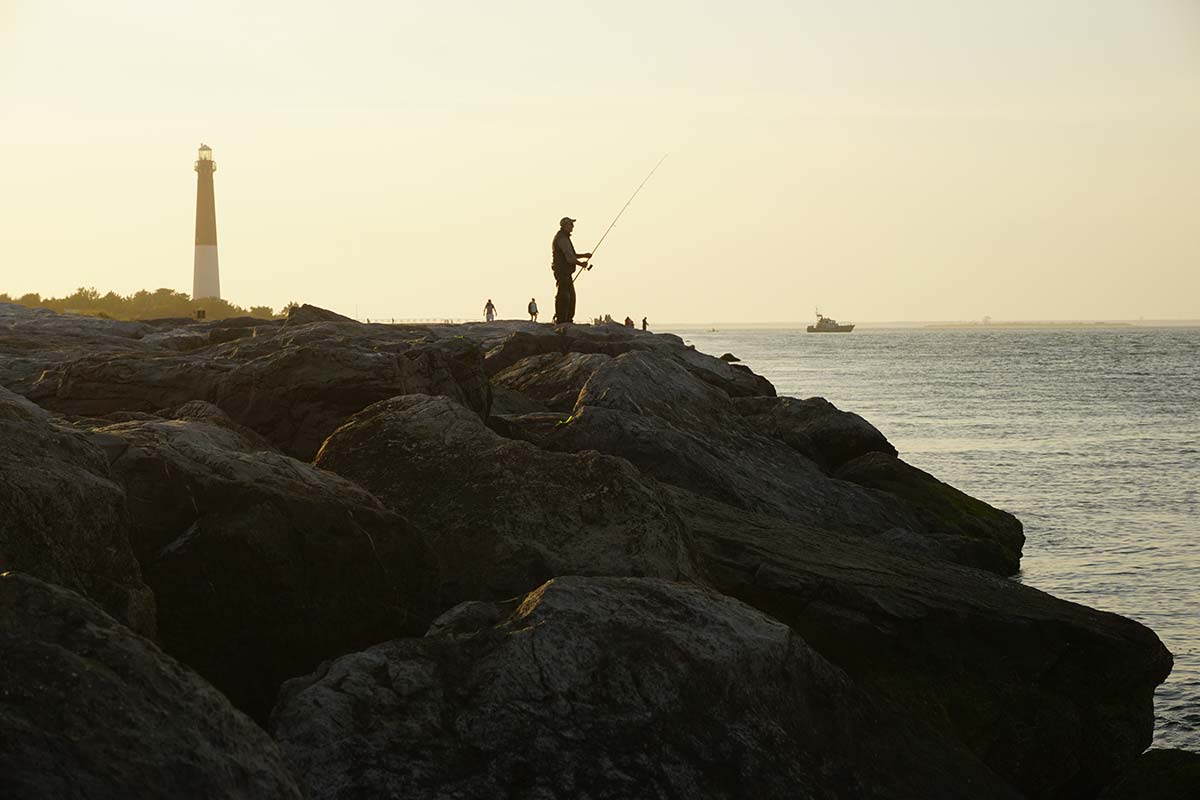
Basics on jetty rock fishing to follow wherever you may be chasing the rockfish.
Like popular inlet locations at the Jersey Shore from Shark River to Cape May, Indian River Inlet in Delaware is a very dangerous and unforgiving place to fish. The rocks that line the inlet from one end to the other and down the north and south side do not give when they come in contact with the human body.
Even in my younger days, no one would ever describe me a graceful, so I took every precaution when fishing on the rocks. Today I remain on the sidewalk.
Back in the day, we had home-made creepers with some constructed of stainless steel by folks who worked in the numerous oil refineries and chemical plants that lined the Delaware River from Philadelphia to Delaware City. We wore rain suits supplied by the same companies, unions or contractors with their names stenciled on the back. If you had an office job you made friends with someone in the industry and they would get you a rain suit and creepers.

Today the plants are gone and there are numerous clothing companies that make lightweight and breathable rain suits that preform much better than those old yellow things that we sweated in in days gone by. Creepers are also available from companies like Korkers to help with footing on those slippery rocks.
If you are going to fish the jetties you must wear the proper foot wear or risk serious injury or death. I have seen some terrible falls. One man slipped and his leg fell between two rocks. It snapped like a matchstick. The firemen carried him out in a stokes stretcher. We have had fishermen go missing from the jetty only to turn up a few days later floating in the Back Bay.
As a general rule, we fish the jetty beginning as the tide falls out exposing the rocks. Working east until we reach the end where we remain until the tide begins to cover the rocks and then we work back in to the beach.
Many years ago, Bruce Roberts and I fished out to the end of the rocks on the Southside. We were catching and releasing blues on almost every cast and sort of lost track of the tide. By the time we realized what was going on, the water had covered the rocks and we ended up swimming ashore from the ocean side on the jetty.
Like I said, Shark River, Manasquan, Barnegat, Absecon, Cape May, Indian River – they’re all dangerous prospects to fish, but there are ample reasons why folks continue to do so, and a multitude of ways to accomplish the task at hand.
Baits & Lures
One of the oldest and most productive techniques for catching fish at night is drifting sand fleas. I have been doing this since the mid-1960s and I am sure others were doing it long before I began. You can acquire sand fleas (sand crabs, mole crabs) by digging them yourself from the surf, employing your two young sons to dig them for you, or buy them from the local tackle shop. Since I gave up physical labor several years ago and my two young sons are both in their 40s and live pretty far away, I buy them from my local tackle shop in Delaware.

Drifting sand fleas requires placing them tight to the rocks. You will want to put one or two fleas on a circle hook and cast them about 3 feet away from the rocks and allow the current to carry the bait tight into the structure. The next step is up to you; some anglers will allow the fleas to rest where they land while others continue to cast and walk along the rocks or sidewalk. I sort of do both. I look for eddies where the rocks jut out into the inlet creating a bit of a back water where fish can take up station waiting for bait to pass by. I try to drift my fleas past this spot a few times before allowing it to rest there for a while. If I have no takers, I move on to the next promising location.
Live eels are the other popular bait for nighttime fishing at the Inlet. I must admit, I don’t like to use them here as they’re just too much trouble. But live eels are deadly on big striped bass on the inlet rocks (but there are so few big rockfish in Delaware, why go to all that trouble?) If you insist on flinging snakes just treat them like lures. Work them in the current around the rocks and be ready to let the fish have the bait for the first run before setting the hook.
When it comes to artificial lures at Indian River Inlet as with most every other inlet location, the white bucktail with a white plastic tail is the hands down top prize winner. No question, that lure catches more fish than any other here, but is that because it is used far more than any other? Be that as it may, the weight of the bucktail depends on where you plan to fish it. Use an ounce or less if you are going to drift the lure in the rocks. Heavier if you plan to cast out and work deep in the rips. Both techniques will produce.
Big plugs and plastic shads have a lot of fans when herring and shad invade the Inlet. This past spring saw striped bass to 50 inches caught and released on these lures. It was a “be there when the fish come by” situation, and they come by real fast. Anglers worked all night for one or two fish or nothing at all. There is no way to tell where a big striped bass will show up during the night. This year we even saw a few larger trout caught, although nothing like we had in the past.
“IRI” Strategies
The oceanside of the jetties, known as the North and South pockets, were as close to reliable as anywhere earlier in 2020. The lights at the Coast Guard Station provided some good action on smaller striped bass almost all spring with larger ones showing in early June. My personal favorite is the Northside just west of the bridge close to the closed off area. I like to cast a bucktail out into the rip on incoming water, let the lure sink and then retrieve it back so that it works tight to the rocks. When fishing a plug, I will work through the rip with very little retrieve then bring it back tight to the same rocks.
Going further west along the sidewalk you will come to another bend in the rocks. This is another good rip to fish and then you can move close to the lights at the Coast Guard Station. Going east from the bridge on the northside you will see several rips and a continuation of rocks that can be fished with fleas, bucktails or plugs. At the end of the sidewalk is the jetty which on the northside is reasonably flat, but still dangerous.
Over on the southside there are pretty much the same types of structure. Beginning at the west end of the campground there is a good rip where I have caught quite a few fish. Moving back down the sidewalk towards the bridge you will see some calm water until you get closer to the rip under the bridge. Good fishing here at times. From there to the end of the sidewalk it is lots of rocks and eddies. Work them as you would anywhere else.

When you get to the point where the beach meets the jetty you should notice the sand has washed through the rocks and is built up on the inlet side. This is one of my favorite locations. I have caught both rockfish and trout here on night tides. From there on out it is slippery rocks and dangerous currents. Fish them, but be very careful.
Indian River Inlet is part of the Delaware Seashore State Park and to fish there requires an admission fee. It is $5 a day per vehicle for Delaware residents and $10 for non-residents. The park has a bathhouse and restaurant on the southside and a marina, restaurant and tackle shop on the northside. There are campgrounds on both sides. Parking can be a problem during the day, but not at night. Restrooms are located on both sides.
You will need a Delaware General Fishing License to fish anywhere in the state. It will cost $8.50 a year for Delaware residents and $20 a year for non-residents. A seven-day tourist fishing license is available for $12.50.
I have been fishing Indian River Inlet for the better part of 70 years and still get a kick out of every fish I catch there. Access is easy, but like all the inlet rocks you’ve fished along the Striper Coast, you must be careful.




